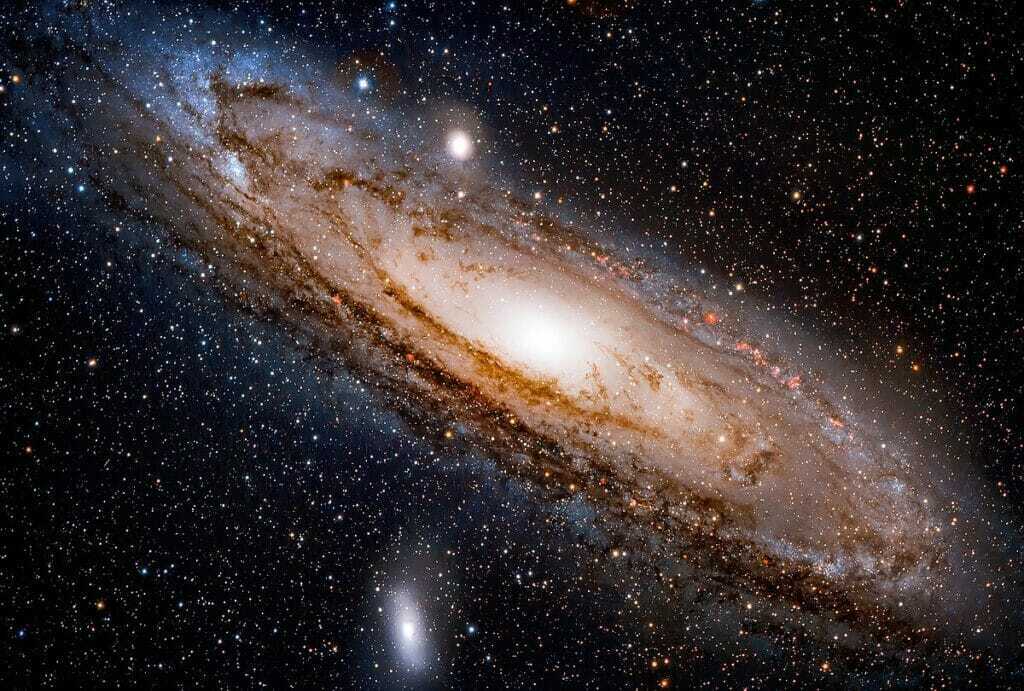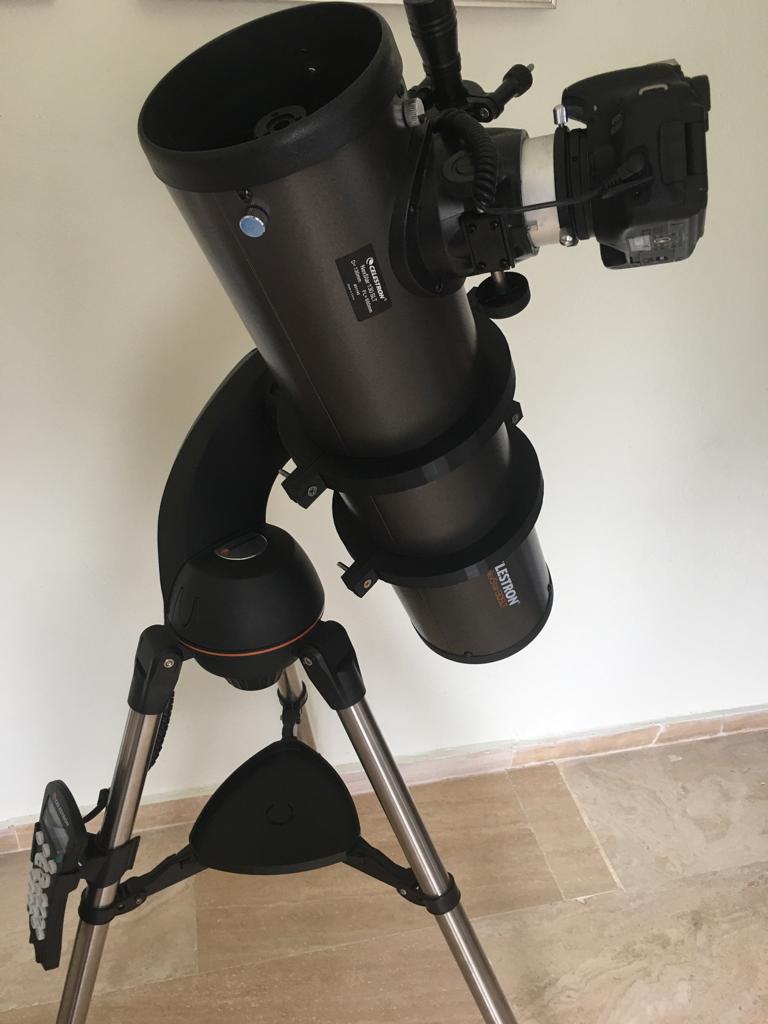Many people who think about buying a telescope wonder just what you will be able to see in the eyepiece. They often imagine amazing sights of galaxies, nebulae, and much more. The reality is quite different from our expectations. On this page, we will discuss this question: “Can you see galaxies with a telescope?” Let’s get started…
It is possible to see some galaxies in a telescope, especially the Andromeda Galaxy. Galaxies are very faint and distant objects that appear small in the eyepiece of a telescope. A few can be seen as a faint patch of fuzziness but most galaxies will not be observable except with large telescopes.

Whether you can see a galaxy in a telescope will depend on a number of things. These include the following:
- The size and brightness of a galaxy.
- How distant it is from us.
- The level of light pollution in the area where you are using your telescope.
- The size and type of your telescope.
- The position of the galaxy in the night sky.
- Your own ability to observe astronomical objects.
- The conditions of the sky during your observations. This is known as the seeing conditions.
As you can see from above there are many factors that will answer this question: Can you see galaxies with a telescope? The galaxy itself is just one of these and others concern the telescope and the atmospheric conditions affecting your seeing.
So, can you see galaxies with a telescope? Let’s take a look at how the above factors affect whether or not you can. First, the size and brightness of a galaxy will make it easier for your telescope to bring it into contrast over the background sky. Details can only be seen if your telescope collects enough light. The brighter the galaxy is, the more light there is, and the easier it will be to see it through any telescope.

The farther away a galaxy is, the fainter it will be and therefore it is many times easier to see a nearby galaxy such as Andromeda, the nearest galaxy to us.
Light pollution exists everywhere except for locations that are very remote and far away from built-up areas such as cities and towns. The amount of light pollution is an important factor because it lightens the background sky and makes it harder to see any deep sky object. Less light pollution darkens the sky and increases the contrast between the background and the galaxy we want to observe, making it easier to see.
As an object in space moves higher in the sky it gets easier to see because there is less skyglow from any light pollution and the atmosphere is much thicker at the horizon. Low in the sky means we see the object through more of the atmosphere as well, making the object dimmer and harder to see.
Astronomical observation is a skill and requires some practice and training to tune your eyes to the night sky and seeing conditions. Before the days of popular astrophotography, observers would sketch the planets and other deep-sky objects with more limited equipment.
Astronomical seeing describes how good the sky conditions are for seeing celestial objects, which includes all objects such as planets, the Moon, galaxies, stars, and so on. The seeing varies because weather conditions and the atmosphere is not constant. Transparency of the sky and variations in the atmosphere can make the moon wobble in a telescope and can make it harder or easier to view objects in the sky, especially those that are very faint such as galaxies.
Find out from my guide here which telescope brand is the best for you.
The Best Way to See a Galaxy in a Telescope
The best way to see a galaxy in a telescope is to get to a dark location, try to use or get access to a large telescope over 8 inches or more that lets in a lot of light, and go looking for a brighter example such as Andromeda.
Can you see galaxies with a telescope? If so, which ones?
Some galaxies are much easier to see than others. The easiest to see is one that can even be seen with the naked eye if your sky is dark. This galaxy is our closest neighbour, Andromeda. I’ve managed to see it and you need a sky of Bortle 4 or better. You also need to know where to look in the sky, usually to the East.
Even with Andromeda in a moderately sized telescope of approximately 5 inches, you can’t see much except the glowing bright core of stars. The outer spirals of the galaxy will probably still be hidden from you.
As we shall see, it is not until you begin to take long exposures of galaxies with a camera that you can begin to see them through a telescope.
What is the best telescope for seeing galaxies?

It’s not just a question of using the biggest telescope possible to see galaxies. We also need to consider which, if any, of the two main types of telescope is better for seeing galaxies.
The two most popular types of telescopes are reflectors and refractors. Which of these, if any, is better for observing galaxies?
The consensus seems to be that reflectors with large apertures of eight to ten inches or more are the best for seeing galaxies. The reason is that reflectors have low magnification and high light-collecting properties, but actually there is not much difference. Galaxies do not need a lot of magnification because of their size but as they are so far away they need a telescope that can collect as much light as possible.
Refractors are better for viewing planets and other such objects that benefit from higher magnification. Refractors gather approximately the same amount of light as reflectors but cost much more compared to reflector telescopes.
Reflecting telescopes are generally a lot cheaper than a refractor of the same aperture size, so they are usually recommended to view galaxies. I have written this short post to guide you in choosing the best telescope for astrophotography, it will help you understand more about which telescopes might be suitable for you.
In Conclusion
We can see galaxies in a telescope but not as clearly or easily as someone without experience in astronomy would expect. The many excellent photos produced by Nasa and others raise our expectations. The reality is galaxies are very hard to see in telescopes and it will probably take a large telescope in a dark location to see them clearly. There are, however, exceptions as several galaxies can be viewed in a moderate telescope.
The best way to see the details of galaxies using a telescope is to take many images with a camera and then process them to bring out the details.






